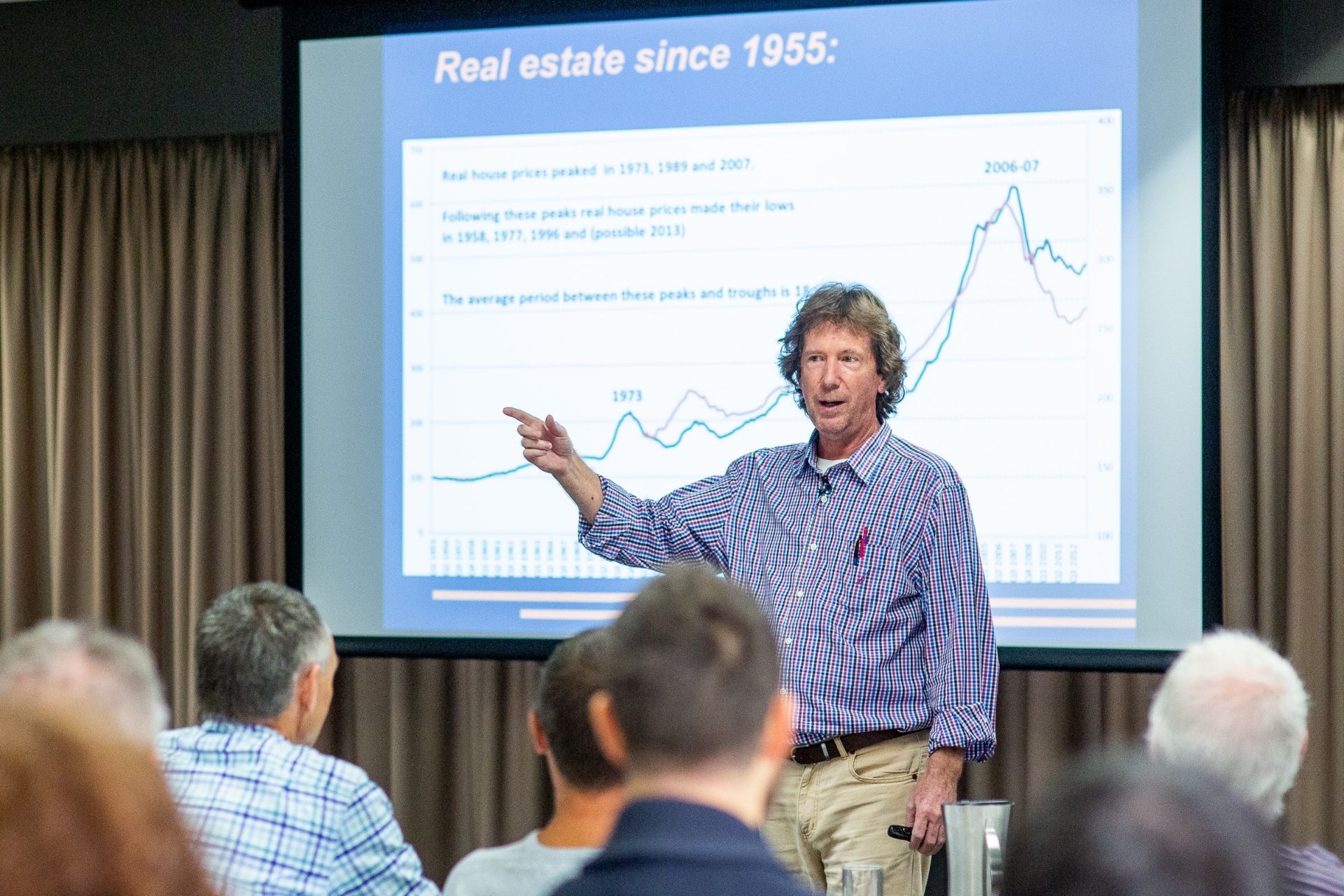Property Booms & Busts can be forecasted through knowledge of the real estate cycle – http://bit.ly/secret-life-2020 -see the book’s Facebook page here – http://bit.ly/fb-secret-life

Economist, best-selling author and global authority on land cycles and US real estate history - Phillip J Anderson - is re-launching his book "The Secret Life Of Real Estate and Banking". The book was first published in 2008, and is available on Amazon and via the book's Facebook page and is expected to become a big hit with investors during this time of uncertainty in 2020 and 2021.
More information on the book can be found here: http://bit.ly/secret-life-2020
The book was written with the aim in mind to educate real estate investors, entrepreneurs, policy maker and CEOs on the 'what', 'why' and crucially 'when' the major turns in the real estate boom and bust cycle take place. There's particular interest in the book currently because the global pandemic has led to great uncertainty in the markets with a stock market panic having taken place in 2020. This book gives the reader a framework for how the real estate market actually works - and in doing so, removes fear of the unknown and confusion from the multitude of media 'expert' opinions that are often conflicting.
The economic uncertainty of 2020 and 2021 has led to the re-launch of the book since it gives the reader an in depth historical perspective and economic basis that in turn enables them to understand that there is more to go in this cycle before there is a significant downturn in the land market.
The Secret Life Of Real Estate and Banking sets its main focus on the 18.6 year real estate cycle otherwise known as the economic cycle or the boom and bust cycle. Readers will likely find a particular interest in the future prediction of the real estate market. The Secret Life Of Real Estate and Banking is published by Shepheard-Walwyn Books, a family owned U.K based publisher established in 1972.
Phillip J Anderson has a background in economics- graduating from university with a degree economics and accounting. This helped shaped the creation of the book as when he was studying at university, his professors could not give him the answers to key economic anomalies. At that time, there was double digit inflation and unemployment manifesting in the economy. At the same time, the theoretical economics he was being taught said these two could not co-exist. Phillip resolved at that point to make it his mission to research why this was the case - and this subsequently led him to study the land market in the US.
When asked about why they wrote the book, Anderson said: "to find answers that the professors and policy makers were not able to give - and to learn why there seemed to be an 18 year cycle in real estate - why do we see regular booms and busts in the economy "
Anderson has hopes that the book will help readers to position themselves ahead of the cycle to be able to profit from the booms and protect their assets and businesses from the busts. This seemingly impossible feat that author makes accessible to all readers is certainly testament to his persistence considering the time the research took during the book's creation. It would take several weeks for Phillip to get data from US libraries - who copied articles and sent them to Australia by post in the days before high speed Internet was available (1998-2008). Phillip also spent 2 years in the U.S carrying out research.
In a recent interview, the author made a point of acknowledging the prior work of Fred Harrison, Roy Wenzlick and Homer Hoyt - 3 giants of land economics for their part in inspiring Phillip to carry out his decade long research that led to the creation of the book.
The book has received rave testimonials from some of the leading voices in this field.
Harry S. Dent Jr., Senior Editor of Survive & Prosper said - ‘I recommend you read Phil’s book. It’s one of the best books ever written on long-term real-estate cycles.’
Professor Mason Gaffney, University of California is quoted as follows: - ‘This is an exciting, important and timely work; it will sell well. Anderson has ferreted out and marshaled dozens of sources on the 18-year cycle of boom and bust in real estate, its history, its mechanics, and its dynamics. Some sources are old and neglected; some are current and neglected; but after Anderson it will be hard for macro-economists to continue neglecting them. He melds the dramatic skills of a raconteur with the industry of a scholar and the discipline of a field marshal, to keep readers wide awake while they follow and most likely accept Anderson’s take on economic history.’
Those interested in learning more about the book can visit here: http://bit.ly/secret-life-2020
